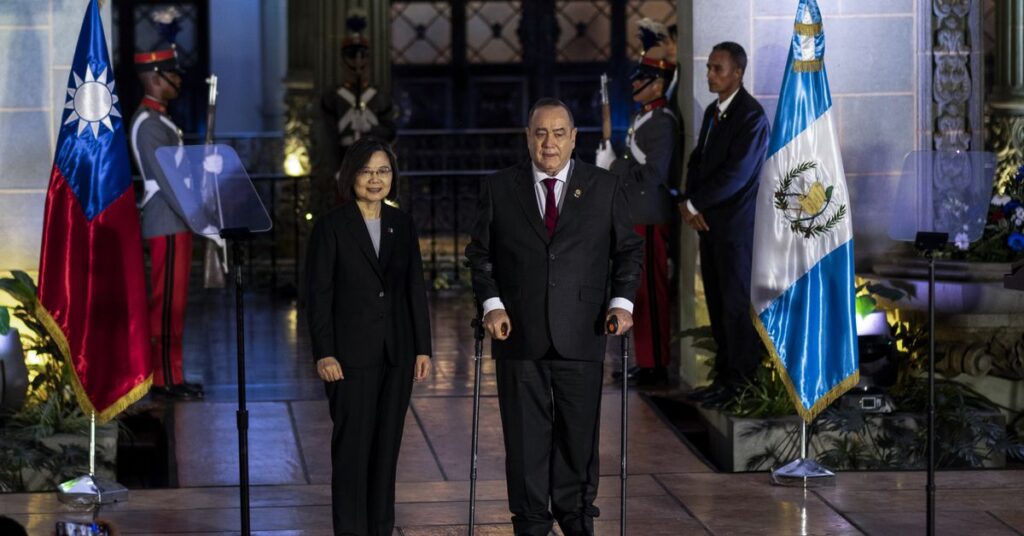Taiwan’s President Tsai Ing-Wen is in the midst of a 10-day trip to the Americas, with stops in Belize, Guatemala, and the US as the island faces an increasingly belligerent Beijing. Tsai’s trip underscores Taiwan’s vulnerable position as its international allies face a pressure campaign from the People’s Republic of China to switch diplomatic ties from Taiwan to the mainland.
Beijing has threatened conflict over Taiwan, which according to its “one China principle” is part of the mainland, to some extent for decades. The tension most recently reached a fever pitch when former Speaker of the House Nancy Pelosi visited Taiwan in August of last year. At the time, Beijing retaliated by sanctioning Pelosi and firing ballistic missiles toward Taiwan, as well as announcing it would extend planned military drills. Now, with Tsai headed to the Americas to shore up support for Taiwan, Beijing has threatened “resolute countermeasures” should Tsai meet with current Speaker Kevin McCarthy next week, as she’s tentatively planned to do.
Just as existential for Tsai, though, may be her scheduled visits to Belize and Guatemala, particularly given the fact Honduras, a former diplomatic partner, recently changed its allegiance to Beijing. Though the US is Taiwan’s most powerful friend and security partner, the US government walks a fine line where the island is concerned. Officially, the US recognizes the People’s Republic of China and respects what it calls the “one China policy,” but practices strategic ambiguity where the two are concerned.
Taiwan itself is in a difficult position, too, as its official number of diplomatic partners dwindles from 14 to 13. Tsai’s visit to Belize and Guatemala will reinforce those countries’ commercial, diplomatic, and military commitments to Taiwan. But China has a tactic of using its relative economic might as a cudgel, typically by persuading poorer nations into infrastructure and lending deals that later…
Read the full article here





